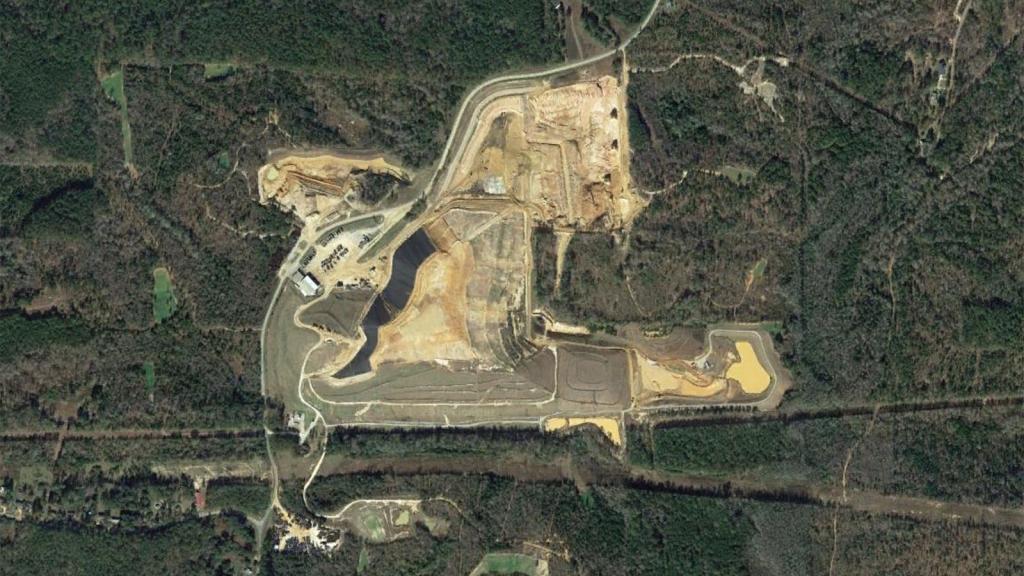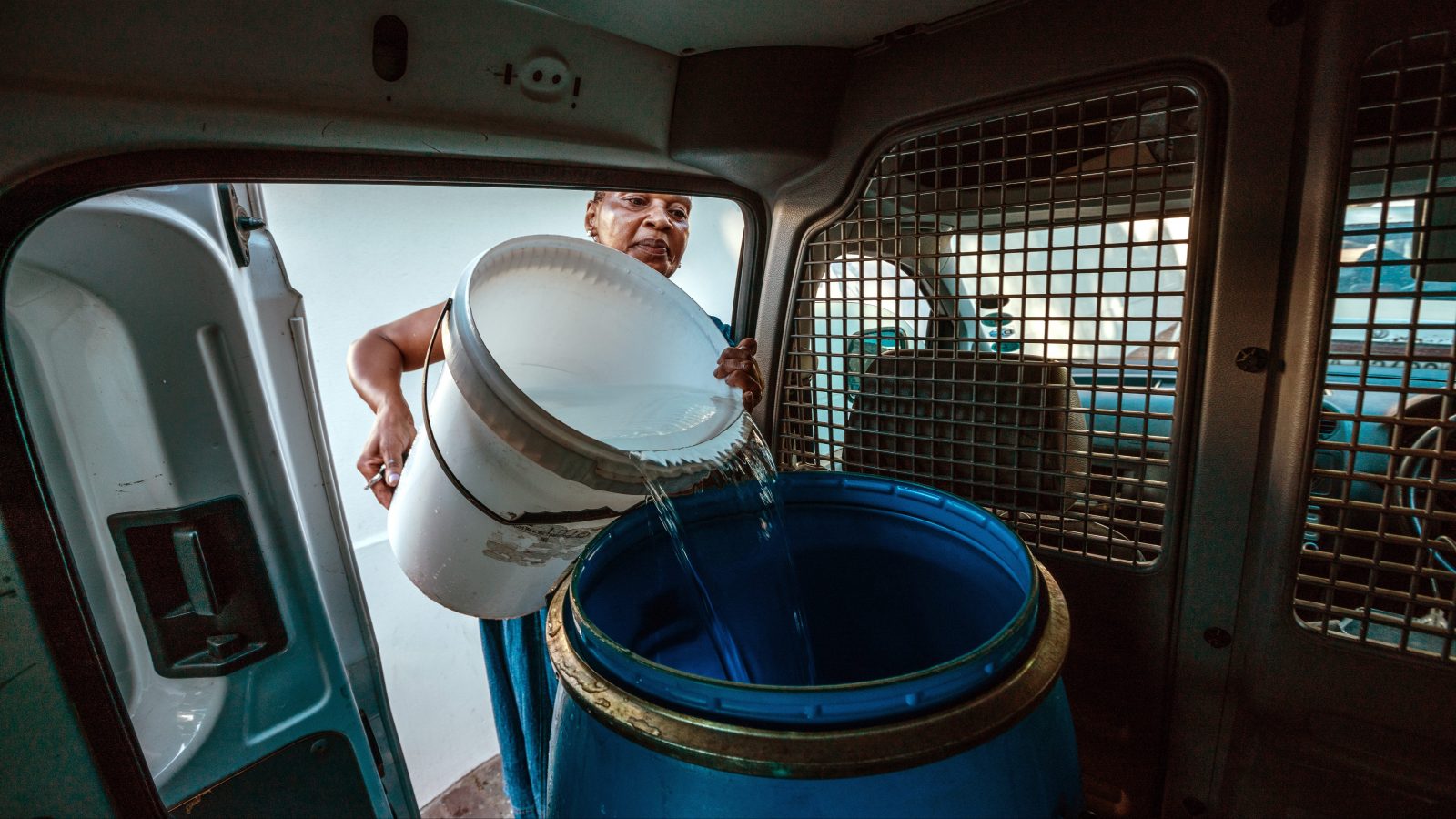This story was originally published by CityLab and is reproduced here as part of the Climate Desk collaboration.
In January 2018, when officials in Cape Town announced that the city of 4 million people was three months away from running out of municipal water, the world was stunned. Labelled “Day Zero” by local officials and brought on by three consecutive years of anemic rainfall, April 12, 2018, was to be the date of the largest drought-induced municipal water failure in modern history.
Photos of parched-earth dams and residents lining up to collect spring water splashed across news sites. The city’s contingency plan called for the entire population to collect its water — a maximum of a two-minute-shower’s-worth a day per person — from 200 centralized water centers, each serving the population equivalent of an MLS soccer stadium.
Then April 12th came and went, and news of the crisis evaporated.
One year on, Cape Town has apparently made it through the worst of a historic drought without turning off the taps, although the water supply is still tenuous. How the city managed to evade disaster — a combination of water conservation and efficiency measures, smarter use of data, and a little help from Mother Nature — serves as a largely hopeful precedent for cities globally facing increasing risk of extreme environmental events. Still, serious challenges in establishing a resilient and sustainable water supply system for Cape Town remain.
90 critical days
The countdown to Day Zero was 90 days. So what did Cape Town do to beat it? Unsurprisingly, it was not a silver bullet but a barrage of efforts that averted disaster. One big boost came in February 2018, when the national government throttled allocation of water in the region earmarked for agriculture, allowing more to flow to urban residents. The same month, farmers also agreed to divert additional water stored for agricultural purposes to the city.
However, the city’s conservation efforts were as important, and more remarkable. Cape Town’s government ramped up water tariffs and enforcement of prohibitions on heavy users, prohibiting use of municipal water for swimming pools, lawns, and similar non-essential uses. The city’s government also implemented a new water-pressure system in January, saving roughly 10 percent of overall municipal water consumption.
The effect was stunning. Cape Town’s municipal water-use levels historically oscillate throughout the year, showing up on a graph as a standing wave pattern with troughs coinciding with wet winters, and peaks mirroring the dry summer months when people rely more on taps for water. Like an ocean wave crashing onto shore, this wave pattern fizzled out as Cape Town implemented drought restrictions, cutting its peak usage by more than half in three years.
The January 2018 announcement alone galvanized a 30-percent drop in residential consumption after a steady but slower decline in earlier stages of the drought, according to City of Cape Town statistics.
A city changes its habits
Technical fixes and regulatory controls implemented by the municipality were important to curbing water consumption, but reaching such levels of conservation would not have been possible without large-scale cooperation by a wide swath of residents, businesses, and other stakeholders.
“It doesn’t matter how much technical expertise you’ve got, but you actually have to stand back and understand the system more broadly,” notes Gina Ziervogel of the University of Cape Town, who has researched the crisis. For the city, this meant using data more effectively to prompt people to save water.
Starting in 2017, the municipality had begun ratcheting up its drought-awareness campaign, publishing weekly updates on regional dam levels and water consumption and using electronic boards on freeways to notify drivers of how many days of water supply Cape Town had left. Then, in January 2018 and with Day Zero looming, the city got more aggressive. In addition to announcing its Day Zero countdown, the city launched a city-wide water map to show water consumption on a household level, allowing people to compare their consumption to their neighbors and the rest of the city.
Heightened outreach regarding the crisis prompted wide discussion: The municipality’s weekly water report became a regular topic at social gathenings and on the radio. Governmental and civic organizations published water-saving techniques, and people traded tips on social media. In an unusual turn of events, techniques used in the poor, water-strapped township areas gained traction in wealthier areas.
Prompted by new water-use tariffs, businesses also began increased efforts to communicate the need to save water to customers and employees. Bathroom signs explaining “If it’s yellow, let it mellow … ” became ubiquitous in restaurants and bars, while startup and corporate types initiated “dirty shirt” challenges to see who could go the most days without washing their work shirt.
Crisis averted (for now)
By the end of March 2018, the emergency efforts had provided a small additional buffer in the city’s water reserves, allowing city officials to push back Day Zero beyond the upcoming rainy season. In June 2018, the region saw average rainfall for the first time in four years. With the rain, dam levels rose, and officials were able to call off Day Zero indefinitely.
Cape Town’s multi-pronged effort to stave off Day Zero succeeded. Still, the challenges to achieving water security persist. Although dam levels are above the lows experienced during the drought, they remain below pre-drought years and currently stand at 50 percent of capacity. Meanwhile, daily water use for the city has crept higher over the past year.
Furthermore, disparities in access to water in Cape Town continue to be related to extreme economic inequality, which generally runs along the racial lines established during South Africa’s colonial and apartheid eras. For a large proportion of Cape Town’s poor citizens, whose only normal access to water is a communal tap, Day Zero remains a constant reality. Combine this with a complex political climate and historical distrust of state policies, and it is easy to understand that a sustained unified effort to conserve water is fraught with tension.
Cape Town is making a longer-term effort to diversify its water resources, but that too is prompting concerns. Projects to desalinate ocean water and tap the aquifer beneath the city have proven far more expensive than initially thought, and have also faced questions about their environmental impacts on local ecosystems and overall sustainability. An increase in private wells drilled by wealthier households has added pressure to the future availability of this source. Although plans for both desalination and groundwater extraction are progressing, neither alone will solve Cape Town’s water issues.
For now, the city and its residents are still enduring moderate drought conditions. Urban water restrictions remain in place, although less strict than before, and the legacy of the drought can still be seen all around Cape Town. Many businesses continue to remind customers to restrict their usage in signs taped to bathroom mirrors and above toilets. That’s probably just as well — water-scarcity issues are not likely to go anywhere, considering the increased risks of drought caused by climate change and population growth.
As for other cities facing similar resource crises: Ziervogel advises “to make sure you’ve got those relationships and partnerships in place so that when a crisis hits you can actually draw on those partnerships.”



